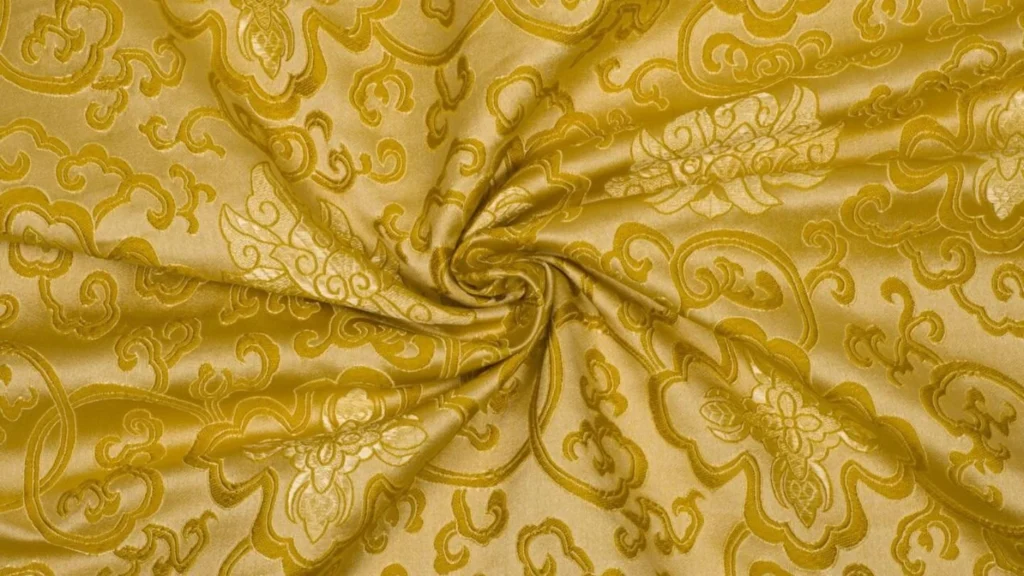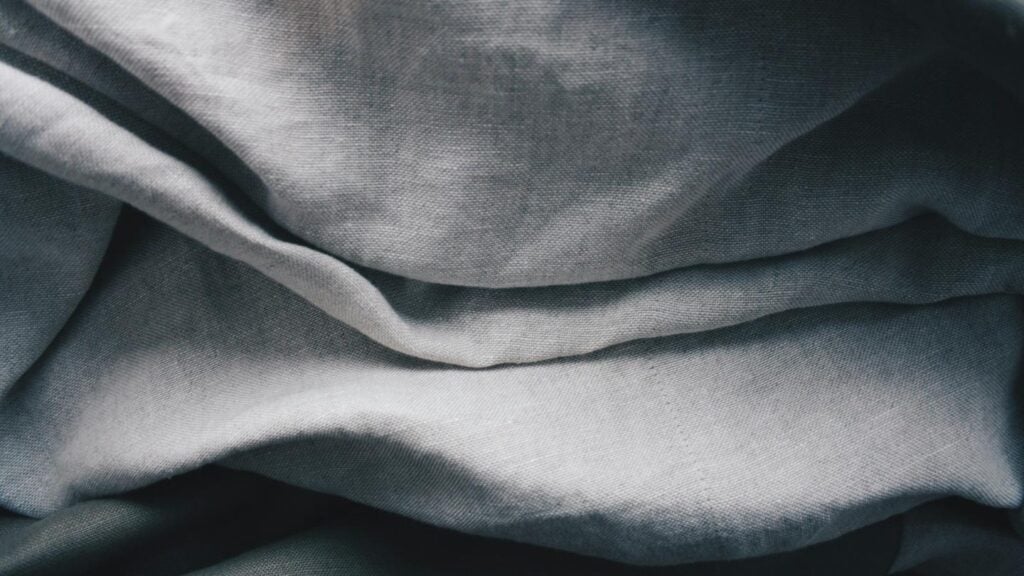2 – Tweed Fabric Composition
3 – Tweed Fabric vs Other Fabrics
4 – Tweed Fabric Is Manufactured
5 – Common Uses in Fashion
6 – Understanding the Environmental Impact of Tweed Fabric
7 – Exploring Price Points and Value for Money
8 – Conclusion
9 – FAQs
What is Tweed Fabric?
Tweed fabric is a versatile and durable textile known for its distinctive, textured appearance and rich history. Traditionally woven from wool, tweed has become a timeless fabric used in both fashion and interior design. Its rugged yet refined aesthetic has made it a staple in high-end fashion, especially for outerwear like jackets, coats, and skirts. But what exactly makes tweed so unique? Here’s a closer look:
- Texture and Weave: Tweed fabric is characterized by its tight weave, often featuring a mix of colors and patterns. Common weaves include plain weave, twill, and herringbone, each contributing to the fabric’s durability and unique look.
- Natural Fibers: Originally crafted from sheep wool, tweed retains its natural warmth and softness, making it an excellent choice for cold-weather garments. Today, it can also be made from synthetic fibers or wool blends, offering different textures and finishes.
- Versatility in Design: Tweed is available in a variety of patterns, from the iconic houndstooth to plaid and checks. These patterns are achieved through a technique called “tweed weaving,” where different colored yarns are woven together to create depth and complexity in the fabric.
- Durability and Functionality: Known for its strength, tweed is also water-resistant, making it perfect for outdoor activities or harsh weather. It’s often associated with outdoor enthusiasts.

Tweed’s ability to combine aesthetics with practicality is what has helped it remain a beloved material in the world of fashion, transcending generations and trends.
Tweed Fabric Origin
Tweed fabric history dates back to the 19th century, originally used by farmers and outdoor enthusiasts for its durability and weather-resistant qualities.
- Scottish Heritage: Harris Tweed, handwoven in the Outer Hebrides, is one of the most famous examples, known for its exceptional quality.
- Irish Influence: Irish tweed is often heavier and more rugged, ideal for colder climates and outdoor wear.
- Practical Use: Initially created for country folk, tweed became popular for its warmth and protection, particularly in rural areas.
Today, tweed is still celebrated for its heritage and timeless appeal in both fashion and functionality.
Tweed Fabric Composition
Tweed is traditionally made from wool, which gives it its signature warmth, texture, and durability. While wool remains the primary fiber, modern tweed can also include a mix of materials, offering different textures and finishes.
- Wool: The core material of tweed, known for its insulating properties and softness. Wool tweed is perfect for cold weather, providing both warmth and breathability.
- Blends: To enhance the fabric’s durability and reduce costs, tweed may be made from blends of wool and synthetic fibers like polyester or acrylic, which can alter its texture and performance.
- Other Fibers: Some tweed fabrics incorporate other fibers such as cotton, silk, or linen, giving the fabric a lighter feel and a more polished appearance.
The composition of tweed not only influences its appearance but also its use in various types of clothing, from heavy coats to lighter summer garments.
Tweed Fabric Properties
Tweed is prized for its unique properties that make it a versatile and durable fabric, ideal for both fashion and functionality.
- Durability: Tweed is known for its strength, able to withstand wear and tear. Its tight weave ensures longevity, making it a popular choice for outerwear and garments exposed to heavy use.
- Warmth: Wool fibers trap heat, offering excellent insulation. Tweed is particularly valued for its ability to retain warmth without being too heavy or bulky.
- Breathability: Despite its warmth, tweed is breathable, allowing moisture to escape and helping regulate body temperature, which makes it comfortable for both cold and mild conditions.
- Water Resistance: The natural oils in wool provide some water resistance, making tweed a great choice for outdoor activities in light rain or damp conditions.
- Texture: Tweed’s signature texture comes from its woven pattern, which can vary from smooth to rough depending on the fiber and weave. This gives tweed its rich, textured look that’s both practical and stylish.

Tweed’s properties make it an ideal choice for versatile, long-lasting garments that perform well in various environments and weather conditions.
How Tweed Fabric Is Manufactured
The manufacturing process of tweed involves traditional techniques that ensure the fabric’s durability and distinctive texture, with modern variations incorporating advanced technologies.
- Weaving: Tweed is typically woven using a shuttle loom, which creates its characteristic textured appearance. The fibers are interlaced in a tight pattern, giving tweed its strength and structure.
- Dyeing: The yarns used in tweed are often dyed before weaving, using natural or synthetic dyes. Traditional tweeds, like Harris Tweed, are known for their rich, earthy tones achieved through natural dyeing methods.
- Finishing: After weaving, the fabric undergoes finishing processes to soften the fibers and enhance its texture. This can involve steaming, brushing, or washing the fabric, giving tweed its signature feel and appearance.

While the basics of tweed manufacturing remain rooted in traditional craftsmanship, modern techniques allow for variations in texture, color, and functionality, expanding its use in both fashion and other industries.
Produce your fashion collection with us
Common Uses in Fashion
Tweed has long been a staple in the fashion industry due to its timeless appeal and versatile qualities. From classic outerwear to modern accessories, tweed is used in a wide range of garments.
- Outerwear: Tweed is most famously used in jackets, coats, and blazers. Its warmth and durability make it perfect for colder climates, while its stylish texture adds sophistication to any outfit.
- Skirts and Trousers: Tweed is also commonly used for skirts and trousers, offering a professional, tailored look. Its structured nature ensures these garments retain their shape over time.
- Accessories: Beyond clothing, tweed is used in accessories like hats, scarves, and handbags. Its distinctive texture and patterns add a touch of elegance and class to smaller fashion items.
- High-End Fashion: Designers like Chanel have elevated tweed to the height of luxury fashion, incorporating the fabric into iconic pieces like Chanel suits, showing its ability to transition from everyday wear to high fashion.

Tweed’s versatility, combined with its association with elegance and durability, makes it a favored choice for both casual and formal wear across various seasons.
Understanding the Environmental Impact of Tweed Fabric
Tweed, primarily made from wool, has both positive and negative environmental impacts, depending on how it’s produced and the materials used.
- Sustainability of Wool: Wool is a natural, biodegradable fiber, making it a more sustainable option compared to synthetic fabrics. It requires less energy to produce than many synthetic fibers and can be recycled or composted at the end of its life.
- Ethical Sheep Farming: The environmental impact of wool largely depends on farming practices. Ethical sheep farming, which prioritizes animal welfare and land sustainability, can reduce the negative effects associated with wool production, such as overgrazing or water usage.
- Dyeing and Finishing: The dyeing process for tweed can sometimes involve harmful chemicals, especially with synthetic dyes. However, some manufacturers are turning to natural dyes and more eco-friendly processes to reduce their environmental footprint.
- Durability and Longevity: One of tweed’s biggest advantages is its durability. Long-lasting garments made from tweed reduce the need for frequent replacements, making it an environmentally friendlier choice in the long run.

Tweed’s environmental impact is influenced by the sourcing of materials, production processes, and end-of-life disposal, but its inherent durability and potential for sustainable practices make it a fabric that can be more eco-conscious compared to many alternatives.
Exploring Price Points and Value for Money
Tweed fabric can vary greatly in price, depending on its composition, origin, and manufacturing process. Understanding what influences the cost of tweed can help consumers determine whether it’s worth the investment.
- Quality of Wool: The type of wool used plays a significant role in determining the price of tweed. High-quality, handwoven tweeds, like Harris Tweed, are often more expensive due to the labor-intensive production methods and superior wool.
- Blended Fabrics: Tweed made from blended fibers, such as polyester or acrylic mixed with wool, is generally more affordable. These blends offer a similar look and texture but at a lower cost, making them accessible for those on a budget.
- Brand and Heritage: Established brands with a heritage in tweed production, such as Harris Tweed or Irish tweed, often command a premium price due to their reputation and the craftsmanship involved. The history and prestige of the brand can add value to the fabric.
- Durability and Longevity: While tweed may have a higher upfront cost, its durability offers long-term value. A well-made tweed garment can last for years, providing better value for money compared to cheaper, less durable fabrics.

Conclusion
Tweed fabric is a timeless and durable material, originating from Scotland and Ireland, and known for its versatility and warmth. Its combination of natural wool, intricate weaving, and durability makes it a top choice for both casual and luxury fashion.
- Durability: Tweed lasts for years, offering great value for money.
- Sustainability: As a natural fiber, wool-based tweed is more eco-friendly compared to synthetic options.
- Timeless Style: From coats to accessories, tweed adds a touch of sophistication to any wardrobe.
In short, tweed continues to be a classic fabric that merges tradition, quality, and style.
FAQs
- Is tweed fabric itchy?
Traditional wool tweed may feel a bit rough, but modern versions, especially those with blended fibers or lining, are much softer and more comfortable to wear. - How do you clean tweed fabric?
To maintain its texture, tweed should generally be dry cleaned. For light cleaning, use a soft brush to remove dirt or dust without damaging the fabric. - Can tweed be worn in warm weather?
Although tweed is known for its warmth, lighter tweed made with cotton or linen blends can be comfortable for spring or autumn weather. - What’s the difference between Harris Tweed and regular tweed?
Harris Tweed is a high-quality tweed handwoven in the Outer Hebrides of Scotland. It’s known for its craftsmanship and is a protected trademark, making it a premium version of the fabric. - Can tweed be used for upholstery?
Yes, tweed’s durability and texture make it an ideal choice for furniture upholstery, especially in pieces that need to stand the test of time. - Is tweed waterproof?
Tweed has some natural water resistance due to the lanolin in wool fibers. However, it’s not fully waterproof and should be treated or lined for full rain protection. - How long does tweed last?
Tweed is extremely durable and can last for many years, especially if cared for properly. Its lasting quality makes it a great investment for long-term wear. - Can tweed be tailored?
Yes, tweed is a popular choice for tailored garments, including suits, jackets, and skirts. Its structure allows for excellent shaping and custom fits. - Is tweed suitable for formal occasions?
Absolutely! Tweed is commonly used in both casual and formal settings, especially in the form of blazers, coats, and suits for elegant, sophisticated looks. - What colors are available in tweed fabric?
Tweed is available in a wide range of colors, from earthy tones like browns and grays to more vibrant hues. The fabric is often multi-colored, with different yarns woven together to create complex, textured patterns.







